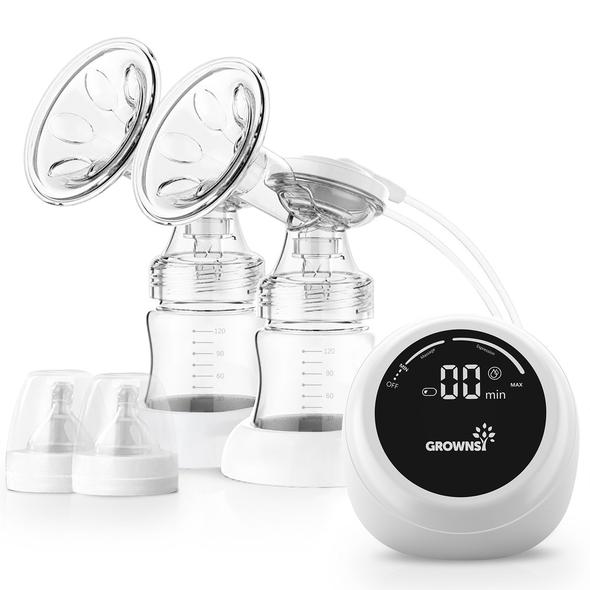Experts say: long-term use of the baby bottle is not good for the baby’s dental health. The longer the use time, the material of the baby bottle will continue to wear and it is easy to breed bacteria. At this time, it is prone to tooth decay. In addition, when the service life of the baby bottle is exceeded, the safety hazard is more likely to occur. For example, breakage and leakage of milk, these potential risks are very great, so the mothers need to be replaced regularly.
How often is it appropriate to change the baby bottle
Generally, baby bottles can be replaced every two to three months. During this period, attention should be paid to the usage of baby bottles. Improper use can easily shorten their lifespan and cause rupture or wear in advance. When Baoma's inspection finds that there is such a problem, it must be It should be replaced in time.
However, under normal circumstances, the safety of baby bottles is still very high. Aside from the quality problems of the baby bottle brand itself, it can still be used for a long time. Usually, each baby bottle is marked with a clear shelf life at the time of purchase. Mom can determine the frequency of bottle replacement according to the shelf life.
You don’t need to change the baby bottle too frequently. After all, a baby bottle is more than 100-300, which is quite expensive, but the pacifier must be replaced frequently. It is best to change it once about three weeks, especially for the baby fed with milk powder, which tends to breed bacteria. , Have an impact on the baby's health.

In addition, the replacement of the baby bottle is also related to the baby's month age, that is, different baby bottles are suitable for babies of different months of age, and the following points are specific:
1. Round milk bottle: suitable for babies from 0 to 3 months old. In this period, the baby feeds and drinks water mainly by the mother. The inner neck of the round milk bottle is smooth and the liquid flows more smoothly;
2. Arc-shaped, ring-shaped feeding bottle: After the baby is four months old, it needs to be replaced with this kind of feeding bottle, because babies over four months old have a strong sense of grip, and the curved bottle is convenient for the baby's small hands to hold and satisfy the baby. Desire to take milk
3. Small feeding bottle with handle: the feeding bottle used by the baby when he is one year old. At this time, the baby can hold and eat by himself, but the holding is often unstable. This kind of feeding bottle is very suitable for training the baby's ability to feed on his own, sitting and lying down Anyway.
All in all, there are still a lot of exquisites about changing baby bottles, which are related to the baby’s months of age and the life of the bottle, but it is usually recommended not to use it for too long, otherwise there are certain safety risks.
How old can the baby bottle be used for the child
There is no fixed age limit for the use age of the baby bottle, but according to the advice given by the pediatrician: the baby can stop using the baby bottle after one year old, not more than one and a half years old at the latest. Long-term use will affect the facial teeth, jaws, and lips And other development.
In this regard, the American Academy of Sciences also gave a conclusion: babies can start to learn to use cups when they start to add complementary foods at 6 months, and then gradually reduce their dependence on feeding bottles, and they must completely quit feeding bottles after one year of age. Pacifiers, etc.
If the baby bottle is used for a long time, it will also have an impact on the baby's health. The specific hazards can be summarized as follows:
1. The impact on teeth arrangement
When the baby sucks the bottle, the lower jaw is stretched and the upper jaw is compressed, resulting in inverted jaw, which is commonly known as "ground cover". Long-term use will affect the normal development of teeth and seriously affect the appearance;
2. "Bottle mouth" appears
"Bottle mouth" refers to the situation where the upper jaw protrudes forward and the dental arch becomes narrow. This is also a phenomenon that may occur after long-term use of the bottle;
3. Hinder the development of chewing ability
Long-term use of baby bottles to drink milk, lack of functional exercise in oral function, affects chewing ability, and can easily lead to picky eaters and partial eclipses, and only like liquid foods and other soft foods that do not need to be chewed;
4. Affect language function
Since 1 year old is a critical period for baby’s language development, babies who use pacifiers will have insufficient lip strength and a half-open jaw, resulting in poor control of the closed syllables of the mandible, which will affect the pronunciation of the labial syllables.
In addition, many novice mothers do not grasp the correct usage of feeding bottles when feeding. For example, they like to let their babies sleep with the feeding bottle. This is very unfavorable to the child's dental health and is prone to dental caries. It can be called the number one killer of children's tooth decay.

